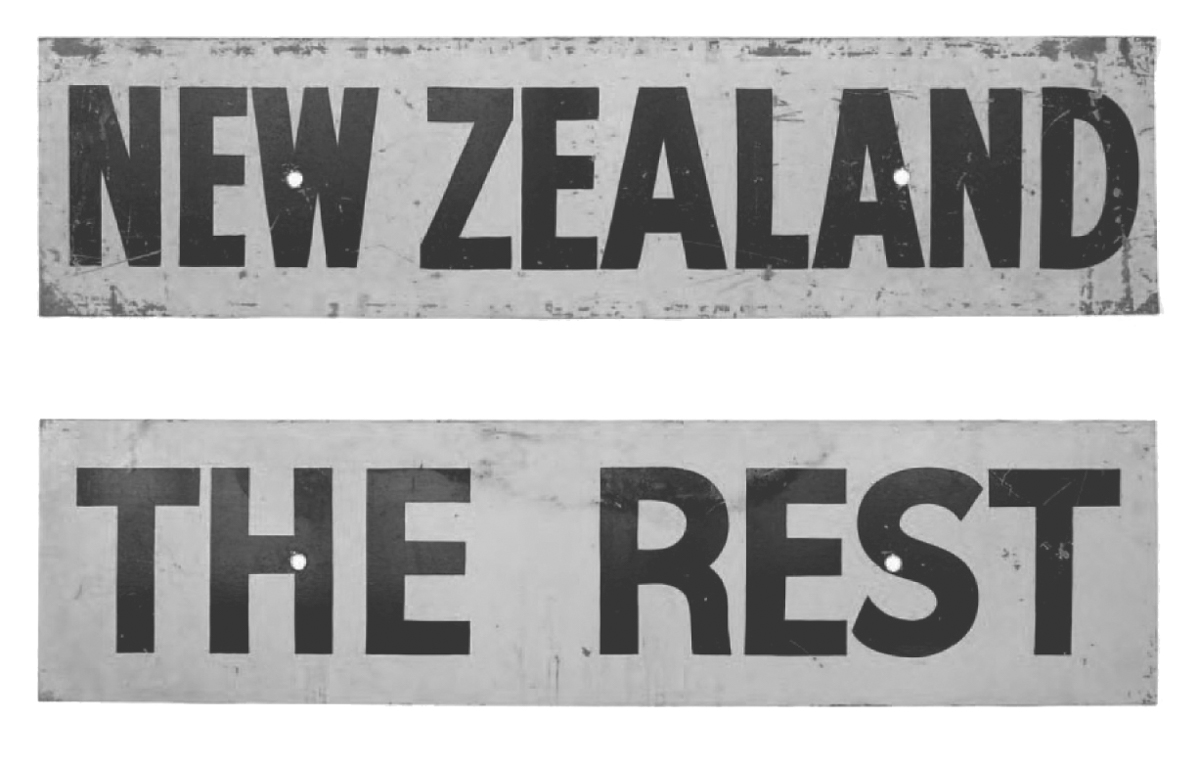The Sub-textual – Mary-Louise Browne


“Words, words, words” said Hamlet and left it at that. William Shakespeare, Hamlet, Act 2, Scene 2, 192
Here however, Jonty Valentine goes much further with his found signs for ‘Possibles vs Probables’.1 Made originally for completely utilitarian purposes they have acquired important aesthetic values through time and use.
The pairs of words are presented both for the information they give and the pleasure that reading aloud affords us. They have become records and messages to be transmitted at a distance by a method more reliable than the purely oral—combinations of simple words which build up a much more complex reading. They can be seen as texts that save an enormous amount of verbal explanation. Valentine’s combination of words makes it possible to transmit even the most complicated ideas and instructions with great accuracy and even greater ambiguity.
Often while driving I find myself reading and misreading personalised number plates, glimpsing signage on approaching trucks, such as WIDE LOAD and OVER SIZE, wondering how to incorporate these into artworks. Recently I was following a police car, fixed on the word POLICE on the bumper and unconsciously gave it a harmless decapitation. (Off with the PO leaving the LICE). Similarly, I have been beheading canturBURY v. AuckLAND at HoME and pruning PonSONby and ProbABLEs. It is not difficult in this system of signs to find words that can be trimmed or sliced twice or more to yield fresh ones.
‘Possibles vs Probables’ are interchangeable lists that can be revisited and updated. Years ago I recognised my own compulsion to keep a notebook, not of observations but of words and excerpts of texts stumbled across, that I constantly rearrange for aesthetic purposes. Many more years ago I stumbled across The Book of Lists2 and became engrossed with the breadth of list making, such as the reported cases of Spontaneous Human Combustion. More recently,
I discovered The New Zealand Book of Lists,3 which has an entire chapter focusing on sporting achievements, providing many in-depth lists and records associated with rugby but omitting any reference to rugby league.
The New Zealand preoccupation with ‘winning’ is a reflection of a nation obsessed with competition and ranking. That obsession naturally tells us a lot about ourselves and our culture—as it did about Charlie Sheen.4 We can make a list of anything that helps us sort out the rankings although it is easy to deceive oneself on those scores. The impulse to list is inexplicable to those who do not share it, utilitarian by accident, in the same way that any compulsion attempts to justify itself.
Footnotes
Jonty Valentine, ‘Possibles vs Probables: Playing with Carlaw Park Scoreboard Signs’, The National Grid #2, December 2006. p.11. ↵
David Wallechinsky, Irving Wallace & Amy Wallace The Book of Lists, 1977. ↵
John McCrystal & Steve Barnett, The New Zealand Book of Lists, Random House, 2007. ↵
Charlie Sheen, American actor whose erratic behaviour cost him his lucrative job as sitcom lead, now has a glossary of terms attributed to him, most notably ‘winning’ which is both the act of triumphing over those that oppose him and an exclamation point used at the end of a sentence. ↵
